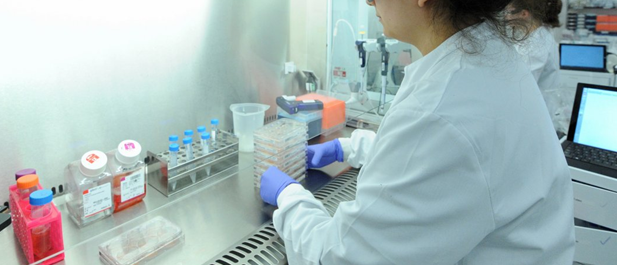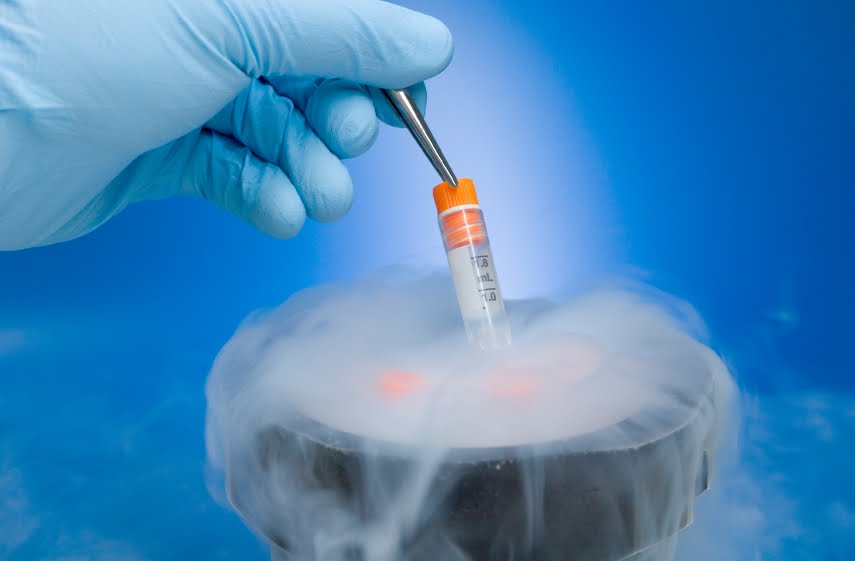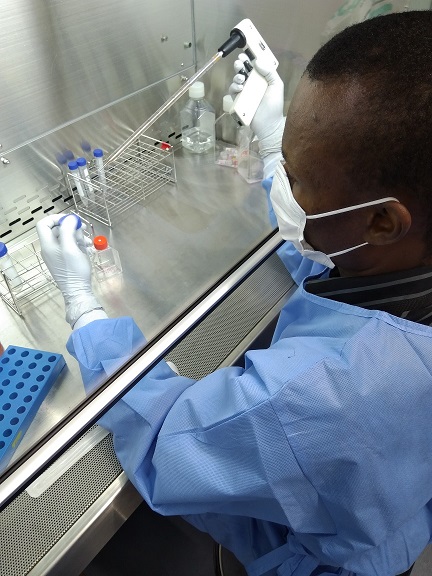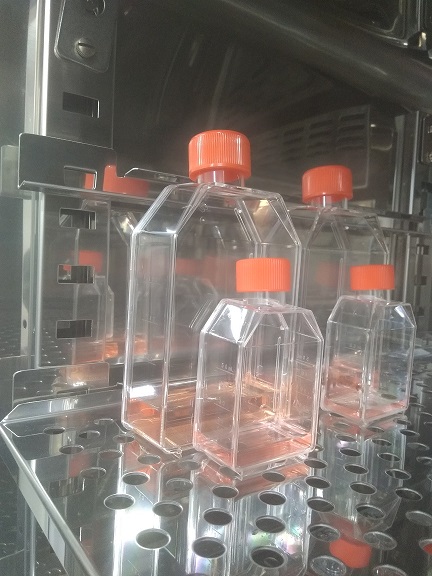A stem cell is a cell with the unique ability to develop into specialised cell types in the body. In the future they may be used to replace cells and tissues that have been damaged or lost due to disease. Figure 1 is an illustration showing a stem cell giving rise to more stem cells or specialised cells.
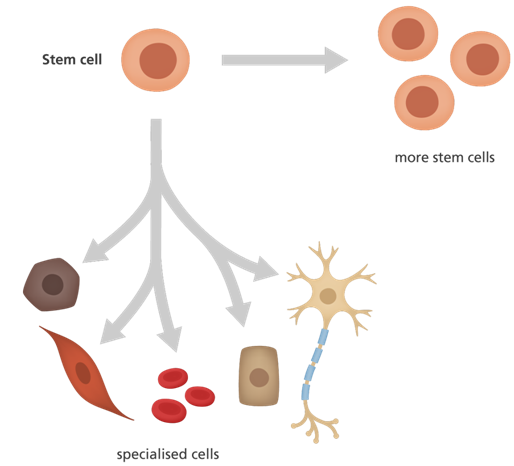
Image credit: Genome Research Limited
- Our body is made up of many different types of cell.
- Most cells are specialised to perform particular functions, such as red blood cells that carry oxygen around our bodies in the blood, but they are unable to divide.
- Stem cells provide new cells for the body as it grows, and replace specialised cells that are damaged or lost. They have two unique properties that enable them to do this:
- They can divide over and over again to produce new cells.
- As they divide, they can change into the other types of cell that make up the body.
Different types of stem cell
Figure 2 shows an illustration showing different types of stem cell in the body. There are three main types of stem cell:
- embryonic stem cells
- adult stem cells
- induced pluripotent stem cells
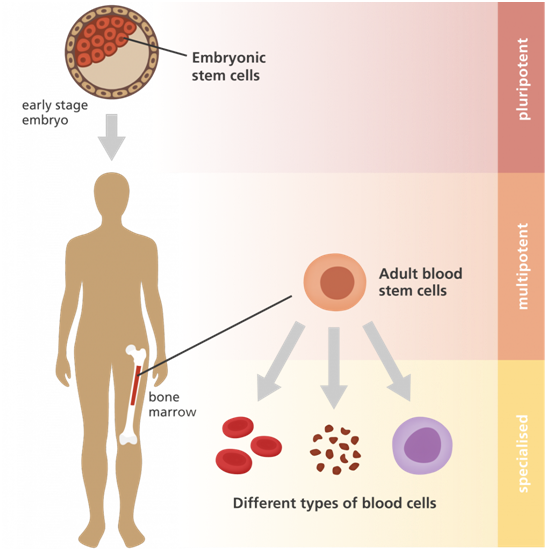
Image credit: Genome Research Limited
Embryonic stem cells
- Embryonic stem cells supply new cells for an embryo as it grows and develops into a baby.
- These stem cells are said to be pluripotent, which means they can change into any cell in the body.
Adult stem cells
- Adult stem cells supply new cells as an organism grows and to replace cells that get damaged.
- Adult stem cells are said to be multipotent, which means they can only change into some cells in the body, not any cell, for example:
- Blood (or ‘haematopoietic’) stem cells can only replace the various types of cells in the blood.
- Skin (or ‘epithelial’) stem cells provide the different types of cells that make up our skin and hair.
Induced pluripotent stem cells
- Induced pluripotent stem cells, or ‘iPS cells’, are stem cells that scientists make in the laboratory.
- ‘Induced’ means that they are made in the lab by taking normal adult cells, like skin or blood cells, and reprogramming them to become stem cells.
- Just like embryonic stem cells, they are pluripotent so they can develop into any cell type.
Why are stem cells useful?
- Stem cells have several uses including:
- research – to help us understand the basic biology of how living things work and what happens in different types of cell during disease.
- therapy – to replace lost or damaged cells that our bodies can’t replace naturally.
Stem cell research
- Research is looking to better understand the properties of stem cells so that we can:
- understand how our bodies grow and develop
- find ways of using stem cells to replace cells or tissues that have been damaged or lost.
- We can use stem cells to study how cells become specialised for specific functions in the body, and what happens when this process goes wrong in disease.
- If we understand stem cell development, we may be able to replicate this process to create new cells, tissues and organs.
- We can grow tissue and organ structures from stem cells, which can then be studied to find out how they function and how they are affected by different drugs.
Stem cell therapy
- Cells, tissues and organs can sometimes be permanently damaged or lost by disease, injury and genetic conditions.
- Stem cells may be one way of generating new cells that can then be transplanted into the body to replace those that are damaged or lost.
- Adult stem cells are currently used to treat some conditions, for example:
- Blood stem cells are used to provide a source of healthy blood cells for people with some blood conditions, such as thalassaemia, and cancer patients who have lost their own blood stem cells during treatment.
- Skin stem cells can be used to generate new skin for people with severe burns.
- Age-related macular degeneration (AMD) is an example of a disease where stem cells could be used as a new form of treatment in the future:
- Some people with age-related macular degeneration lose their sight because cells in the retina of the eye called retinal pigment epithelium (RPE) cells stop working (Figure 3).
- Scientists are using induced pluripotent stem cells to produce new RPE cells in the lab that can then be put into a patient’s eye to replace the damaged cells.
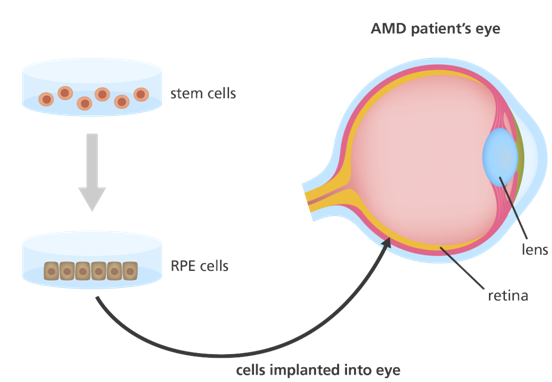
- Stem cells could be used to generate new organs for use in transplants:
- Currently, damaged organs can be replaced by obtaining healthy organs from a donor, however donated organs may be ‘rejected’ by the body as the immune system sees it as something that is foreign.
- Induced pluripotent stem cells generated from the patient themselves could be used to grow new organs that would have a lower risk of being rejected.
How do you generate induced pluripotent stem cells?
- Signals in the body tell a cell what type of specialised cell it should be by switching some genes on and some genes off.
- To generate induced pluripotent stem cells, scientists re-introduce the signals that normally tell stem cells to stay as stem cells in the early embryo. These switch off any genes that tell the cell to be specialised, and switch on genes that tell the cell to be a stem cell.
References
www.yourgenome.org/facts/what-is-a-stem-cell
Discover more from Microbiology Class
Subscribe to get the latest posts sent to your email.


